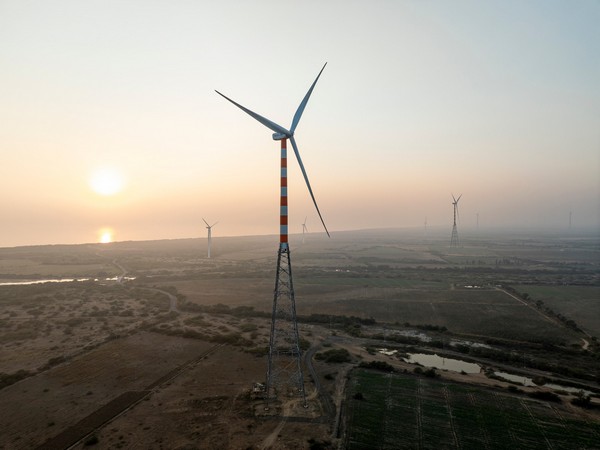Ahmedabad (Gujarat) [India], March 14 (ANI): Adani Green Energy Limited (AGEL) has operationalised 126 MW wind power capacity in Gujarat. This marks the completion of the 300 MW of project, with 174 MW being operationalized earlier.
The 300 MW wind project will produce 1,091 million electricity units, leading to an avoidance of approximately 0.8 million tonnes of CO2 emissions annually, according to a company release issued on Thursday.
With the operationalization of the project, AGEL continues to strengthen its market leadership, operating India’s largest renewable energy portfolio of 9,604 MW.
Its operational assets are maintained and monitored by the cloud-based platform, the Energy Network Operations Centre (ENOC), which enables real-time monitoring and leverages analytics and machine learning setting benchmarks for industry-leading performance.
Wind energy is critical to India’s energy mix for grid balancing.
The complementary nature of wind energy, integrated with solar and other sources, strengthens grid stability.
According to the Ministry of New and Renewable Energy, India has the fourth highest wind installed capacity in the world.
The National Institute of Wind Energy has estimated India’s gross wind power potential at 695.5 at 120 metres and 1163.9 GW at 150 metres above ground level.
Adani Green Energy Limited (AGEL) is a leading renewable energy company, enabling the clean energy transition.
AGEL develops, owns, and operates utility-scale grid-connected solar, wind and hybrid renewable power plants. With a locked-in growth trajectory up to 21.8 Gigawatt (GW), AGEL currently has an operating renewable portfolio of over 9.5 GW, the largest in India, spread across 12 states.
AGEL is credited with developing several landmark renewable energy power plants, the latest being the world’s largest wind-solar hybrid power cluster of 2,140 Megawatt (MW) in Jaisalmer, Rajasthan.
The company has set a target of achieving 45 GW by 2030 aligned to India’s decarbonisation goals.
India meets a sizable portion of its energy needs through coal-fired electricity, and renewable energy projects could be seen as an avenue to reduce the dependence of conventional sources of power.
At COP26 held in 2021, India committed to an ambitious five-part “Panchamrit” pledge. They included reaching 500 GW of non-fossil electricity capacity, generating half of all energy requirements from renewables, to reducing emissions by 1 billion tonnes by 2030.
India as a whole also aims to reduce the emissions intensity of GDP by 45 per cent. Finally, India commits to net-zero emissions by 2070. (ANI)












